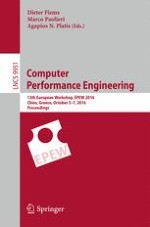2016 | OriginalPaper | Chapter
Combining Simulation and Mean Field Analysis in Quantitative Evaluation of Crowd Evacuation Scenarios
Authors : Sandro Mehic, Kumiko Tadano, Enrico Vicario
Published in: Computer Performance Engineering
Publisher: Springer International Publishing
Activate our intelligent search to find suitable subject content or patents.
Select sections of text to find matching patents with Artificial Intelligence. powered by
Select sections of text to find additional relevant content using AI-assisted search. powered by
